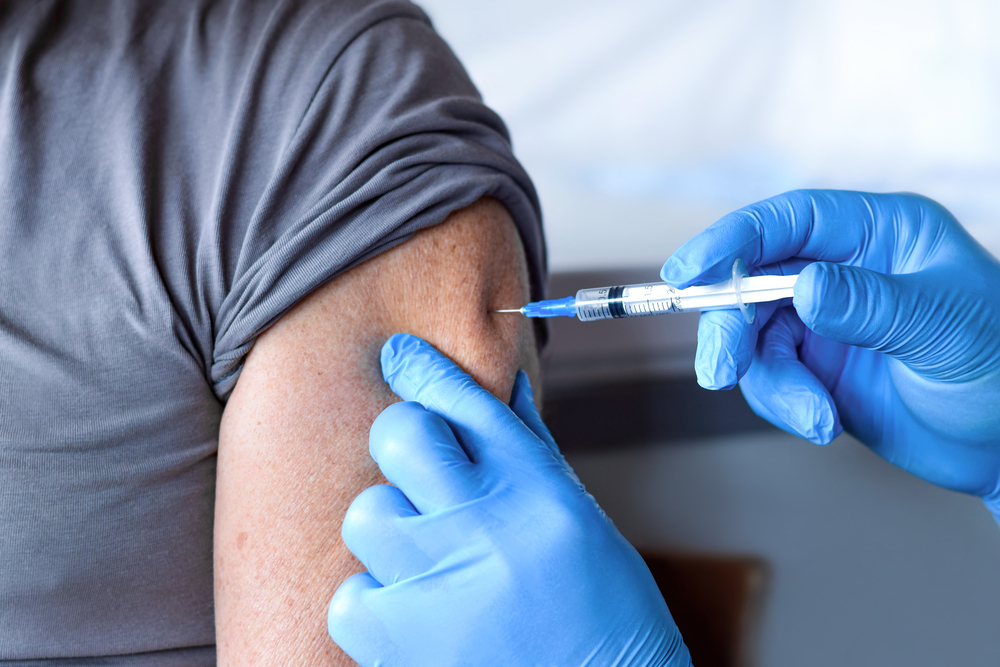The Centers for Disease Control reports that 1 in 36 children in the U.S. are identified with Autism Spectrum Disorder (ASD), boys being 4 times more likely than girls.
And the waiting list to see a specialist for Westchester County families can take as long as a year and a half.
This is why Dr. Andrew Swiderski offers preliminary diagnostic screening that can begin to answer worried parents’ questions.
In his exam room, Dr. Swiderski, a pediatrician at Open Door Family Medical Center in Ossining, hands his young patient a toy cell phone, encouraging the child to push the buttons that produce various sounds. Then he covers the keyboard with his fingers.
“Usually, a child will look up at me or their parent and ask, ‘Why are you doing this?’ They understand someone has interrupted their play,” said Dr Swiderski. “A child with autism will instead get mad at my hand. He won’t look at me and doesn’t make the connection that a person is involved.”
Dr. Swiderski uses a quick 15-minute test called the RITA-T (Rapid Interactive Screening Test for Autism in Toddlers) when autism is suspected in young patients. Along with another test called the M-CHAT-R (Modified Checklist for Autism in Toddlers), these tools help him make diagnoses. He also recommends parents download the CDC’s milestone tracker app, available in English and Spanish, to monitor their child’s development. Dr. Swiderski notes that diagnosing autism requires both experience and training, as the signs can sometimes be subtle.
Autism is a lifelong neurological difference. While there is no “cure,” early identification and support can make a significant positive impact on a child’s development – similar to how early intervention helps with motor, speech, language, cognitive, or social developmental differences. Children can be identified as autistic as early as one or two years of age, which allows for earlier access to supportive resources, though many children aren’t diagnosed until around age four.
“Many healthcare providers hesitate to diagnose autism because they worry it puts a permanent label on the child that will require multiple specialists and therapists,” said Dr. Swiderski. “Parents often become very anxious about this diagnosis. However, pediatricians should be the first to notice autism, just as they identify other developmental differences. The crucial period for identification is between six months and four years of age, which gives families time to access support before the child starts school.”
Experts explain that more children are receiving autism diagnoses today due to greater awareness and more comprehensive testing, not because autism itself has become more common. Dr. Swiderski points out that at Open Door, pediatricians work hand-in-hand with the health care center’s Behavioral Health providers so that these children can be referred to specialists and followed up with, so they don’t fall through the cracks.
Parents, he said, often ask him to check for ASD if they notice their young child suffering from any one or more of a number of different symptoms: such as an inability to respond to social interactions or pick up on non-verbal cues, poor eye contact, lack of interest in others, little imaginative play, repetitive movements, or ritualized behaviors. Dr. Swiderski added there is no evidence to indicate links to any environmental or lifestyle issues, such as vaccines, foods or toxins. It does, however, run in families, where it is not uncommon to find two children with autism in the same family.
Early intervention can dramatically improve outcomes for children with autism. Research shows that children who receive appropriate support before age three develop better language skills, social capabilities, and adaptive behaviors than those diagnosed later. Interventions may include behavioral therapy, speech therapy, and specialized educational programs tailored to each child’s specific needs.
“When we identify autism early and connect families with the right resources, we see remarkable progress,” explains Dr. Swiderski. “Children develop stronger communication skills, better social connections, and greater independence. Early intervention doesn’t just help the child—it empowers the entire family with tools and strategies to support their child’s unique development path.”
The challenge remains ensuring all children have access to these early screening tools, particularly in underserved communities. Open Door’s integrated approach, combining pediatric care with behavioral health services, aims to close this gap and ensure every child receives the support they need as early as possible—setting them on a path toward their fullest potential.



